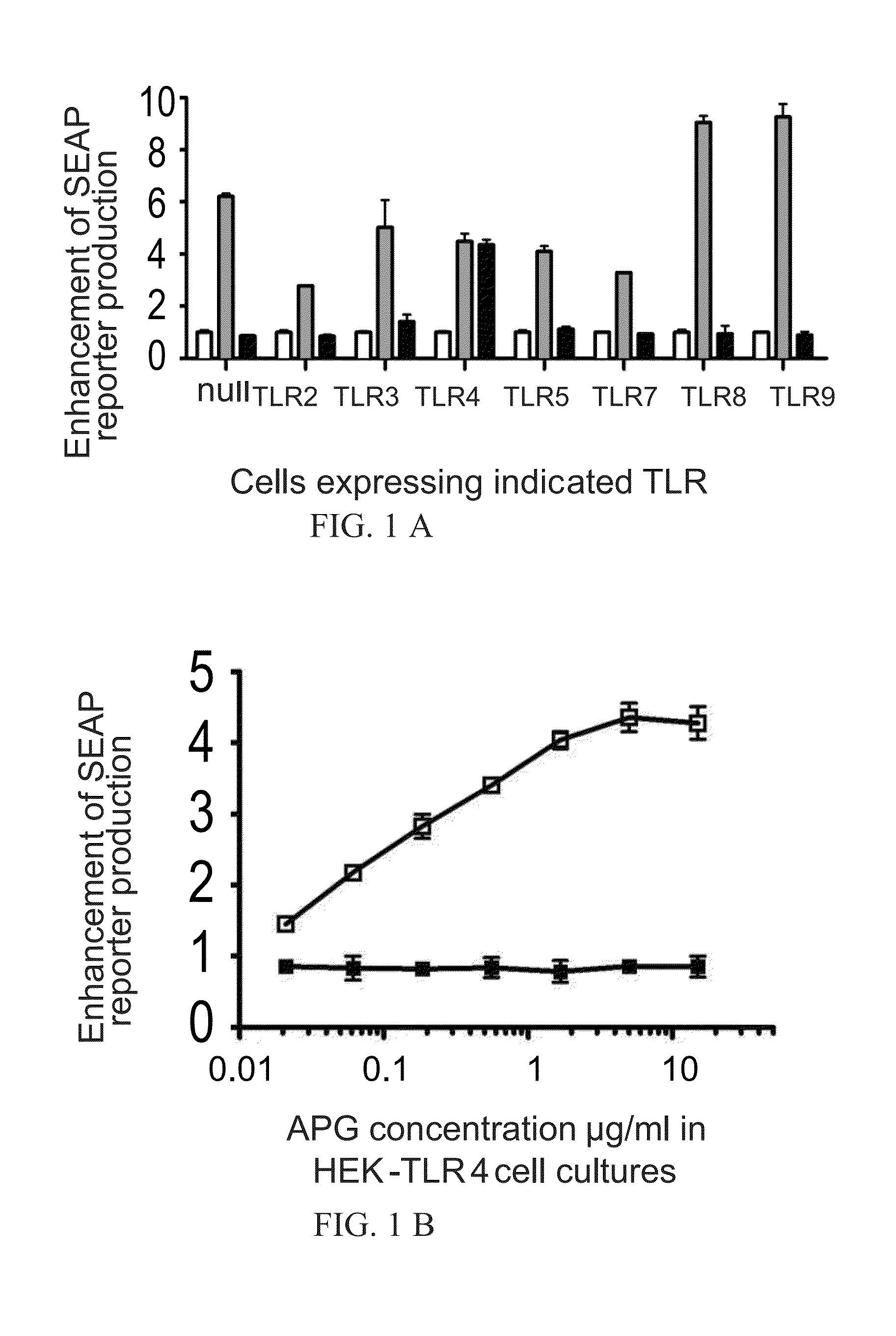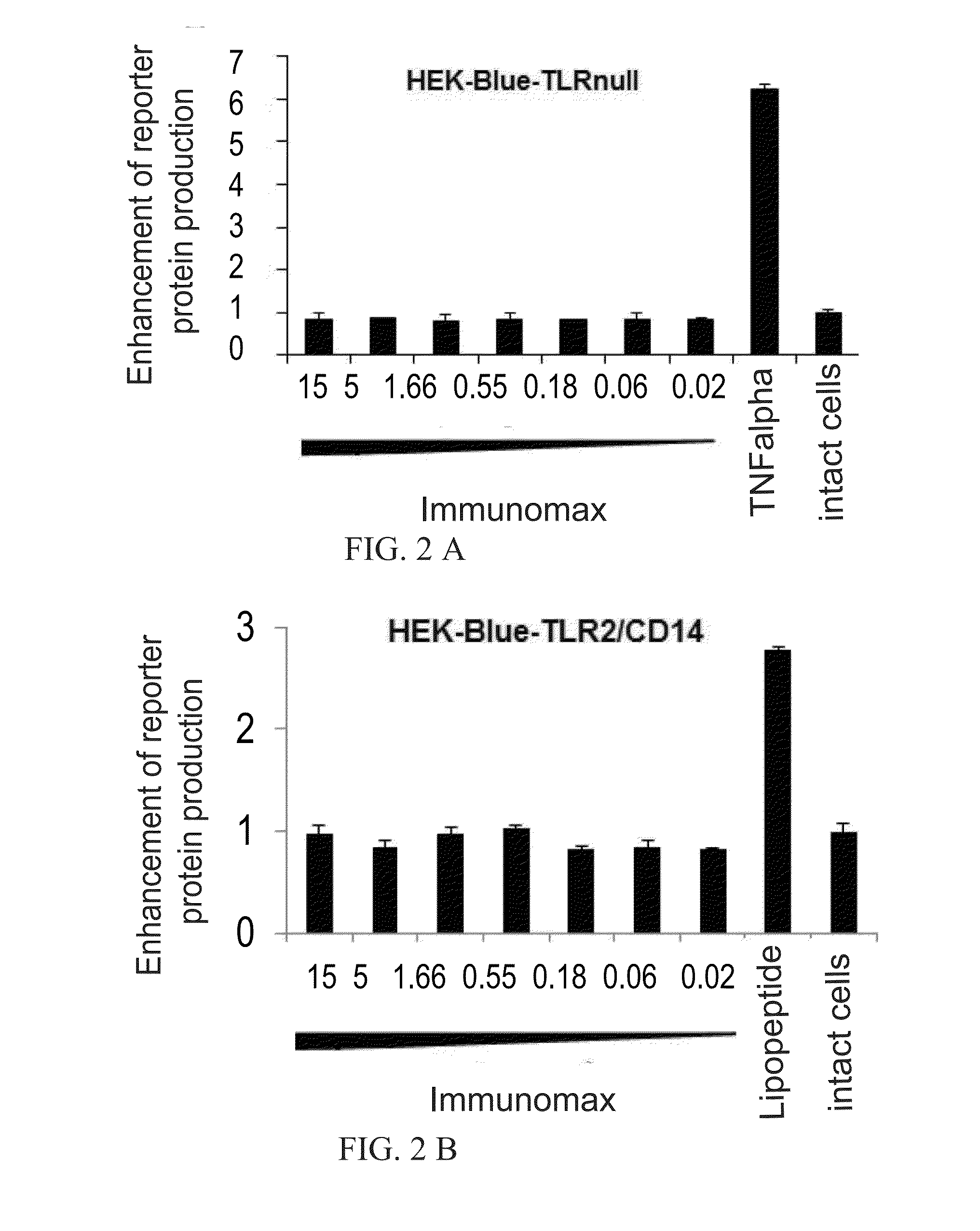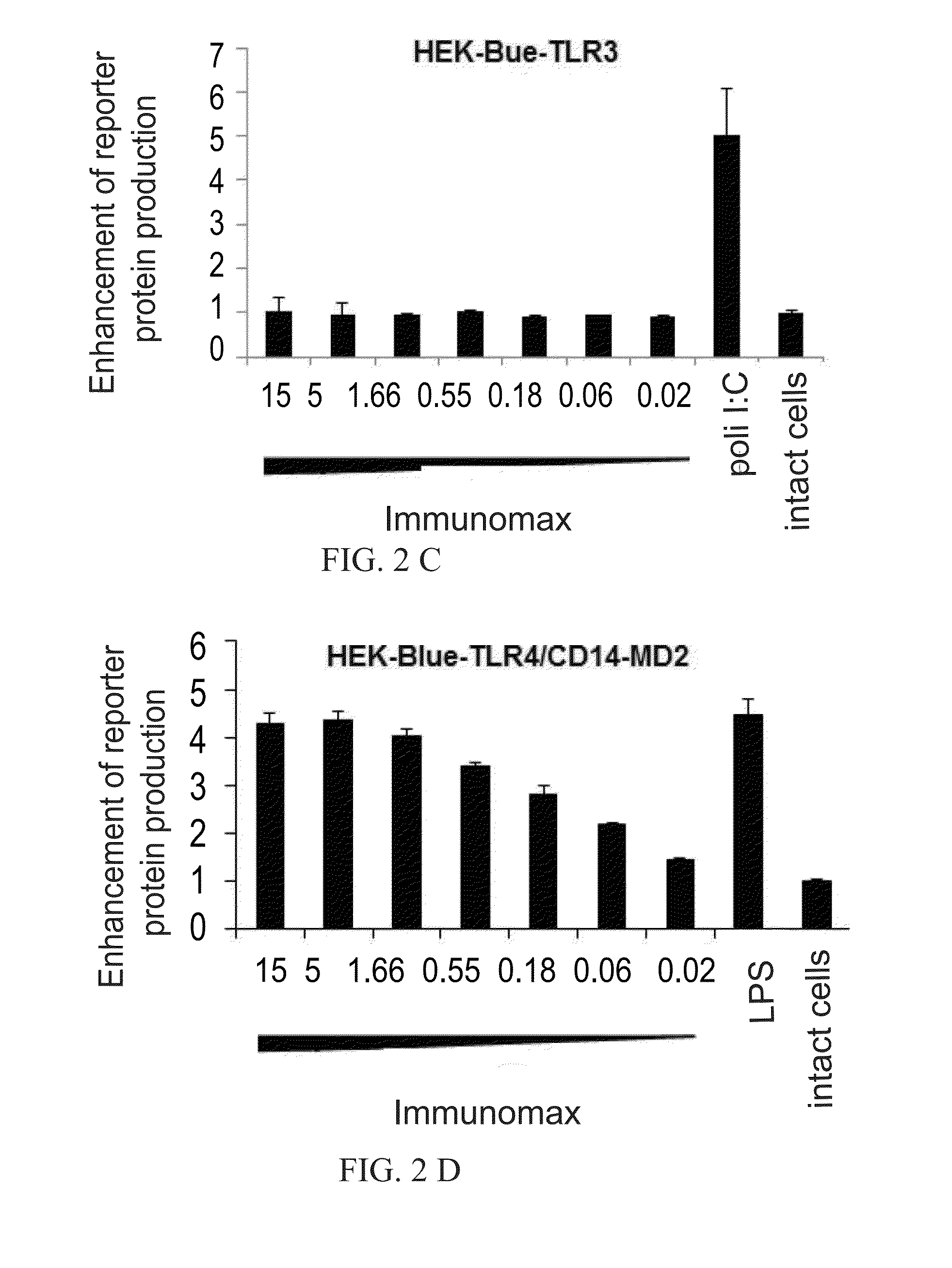Composition for Enhancing Transgene Expression in Eukaryotic Cells and Method for Enhancing Production of a Target Protein Encoded by a Transgene
a technology enhancing production, applied in the field of biotechnology and medicine, can solve the problems of high complete alteration of normal functions, etc., and achieve the effects of enhancing transgene expression, enhancing the production of a target protein encoded, and reducing the risk of lethal outcom
- Summary
- Abstract
- Description
- Claims
- Application Information
AI Technical Summary
Benefits of technology
Problems solved by technology
Method used
Image
Examples
example 1
Construction of Plasmids Encoding Cytoplasmic, Secretory, or Membrane Protein
[0067]As a DNA vector, replication-defective recombinant human adenovirus (serotype 5) nanoparticles are used.
[0068]At the first stage, to obtain RDRANs, plasmid constructs are created, which bear expression cassettes containing nucleotide sequences which encode cytoplasmic GFP, secreted SEAP protein, and HA1, HA3, or HA-B membrane proteins. Thus, plasmid constructs pShuttle-CMV-GFP, pShuttle-CMV-SEAP, pShuttle-CMV-HA1, pShuttle-CMV-HA3, and pShuttle-CMV-HA-B are obtained.
[0069]The pShuttle-CMV plasmid construct with the genome fragments of type 5 human adenovirus (AdEasy Adenoviral Vector System, Stratagene Cat. No. 240009), specifically designed for obtaining of replication-defective recombinant adenovirus nanoparticles, is used to obtain the following plasmid constructs: pShuttle-CMV-GFP, pShuttle-CMV-SEAP, pShuttle-CMV-HA1, pShuttle-CMV-HA3, and pShuttle-CMV-HA-B. The pShuttle-CMV plasmid construct is h...
example 2
Obtaining and Testing of Replication-Defective Recombinant Adenovirus Nanoparticles with Inserted Genes of Target Proteins GFP, SEAP, HA1, HA3, or HA-B
[0071]Replication-defective recombinant adenovirus nanoparticles Ad-GFP, Ad-SEAP, Ad-HA1, Ad-HA3, and Ad-HA-B, which bear expression cassettes containing nucleotide sequences encoding cytoplasmic GFP, secreted SEAP protein, and HA1, HA3, and HA-B membrane proteins, respectively, are obtained using the AdEasy Adenoviral Vector System (Stratagene, Cat. No 240009) via homologous recombination of adenoviral genome fragments in E. coli cells. The presence of GFP, SEAP, HA1, HA3 HA-B protein genes in RDRANs is confirmed by PCR. Then titers of replication-defective recombinant adenovirus nanoparticles Ad-GFP, Ad-SEAP, Ad-HA1, Ad-HA3, and Ad-HA-B are determined by the plaque formation assay in HEK293 (human embryonic kidney cells) cell culture [Graham F. L., Prevec L. Manipulation of adenovirus vectors. / / Methods in Mol. Biol., 1991, v. 7, p...
example 3
Acidic Peptidoglycan (APG) Having a Molecular Weight of 1200-40000 kDa (Russian Patent No. 2195308) and a Pharmaceutical Drug Immunomax (Reg. No. 001919 / 02) are TLR4 Agonists
[0076]To identify cellular receptors for APG ((Russian Patent no. 2195308) and Immunomax (Reg. No. 001919 / 02), a collection of HEK-Blue (InvivoGen) cell lines was used, which cells stably express either TLR2, TLR3, TLR4, TLR5, TLR7, TLR8, or TLR9. All of the used HEK-Blue cell lines have an inducible SEAP reporter gene controlled by an NF-kB dependent promoter. In this cell lines, a signal from TLR leads to the secretion of SEAP reporter protein into the culture medium. The study using HEK-Blue cells expressing different TLRs showed that APG (Russian Patent no. 2195308) and Immunomax, a pharmaceutical compound, are TLR4 agonists. Both effectors activated NF-kB dependent production of SEAP reporter protein only in cells expressing TLR4 receptors (FIG. 1A, FIG. 2). Activation of TLR4-NF-kB signaling pathway direct...
PUM
| Property | Measurement | Unit |
|---|---|---|
| molecular weight | aaaaa | aaaaa |
| molecular weight | aaaaa | aaaaa |
| optical density | aaaaa | aaaaa |
Abstract
Description
Claims
Application Information
 Login to View More
Login to View More - R&D
- Intellectual Property
- Life Sciences
- Materials
- Tech Scout
- Unparalleled Data Quality
- Higher Quality Content
- 60% Fewer Hallucinations
Browse by: Latest US Patents, China's latest patents, Technical Efficacy Thesaurus, Application Domain, Technology Topic, Popular Technical Reports.
© 2025 PatSnap. All rights reserved.Legal|Privacy policy|Modern Slavery Act Transparency Statement|Sitemap|About US| Contact US: help@patsnap.com



